Week 22: #52 Ancestors – At the Cemetery
By Eilene Lyon
There is a cemetery in New Orleans that I have not seen, and probably never will. Why? Because there are no grave markers, and the buried remains are merely a bony tangle in the delta silt. Still, it is hallowed ground. This is the Charity Hospital Cemetery.
I don’t know for a fact that my 4th great-uncle was buried in Charity, but it’s most likely. The only other possibility is Holt Cemetery nearby. Both were considered “Potter’s Fields” and the indigent dead were buried in the ground – unusual in this part of the city, where most bodies rest in above-ground mausoleums.

Jean Louis, a prominent citizen, founded Charity Hospital upon his death in 1736. His will set the terms for using his estate for treating the city’s poor. A tax on immigrants disembarking at the New Orleans wharf provided the primary funding for many years. This was fitting, given that people from those same ships made up the vast majority of the hospital’s clientele.
Charity was always a teaching hospital. By 1851, when Uncle Humphrey Anderson went there for treatment, it was the largest hospital on the planet. The building existing at that time had been constructed in 1832, after two earlier structures were demolished by fire. It was a model of enlightenment in health care.

It featured high ceilings, wide halls and many large, multi-paned windows. The second and third floors were devoted to twenty-one wards that opened to the central hall, designed to hold up to 540 patients. The rear of the building had a spacious veranda opening to a courtyard which served to keep the building cool and pleasant year-round.
In 1851, roughly ninety percent of over 18,000 patients were treated and released. You might think a ten-percent fatality rate was high, but that’s a misconception. Given the illnesses and generally poor health of those who ended up at Charity, the number of deaths was remarkably low for the time.
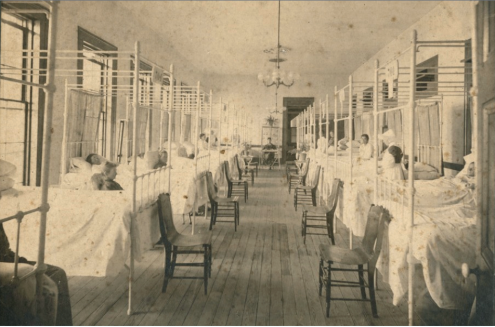
The hospital board acquired land for the cemetery in 1848 and put it into service during a severe cholera epidemic in 1849. Many epidemics followed, including a particularly bad rage of yellow fever in 1853. Many times the bodies were buried in mass graves. None had permanent markers. It was simply a muddy patch of bare ground.
Eventually the burials ceased. Only the ashes of bodies donated to the Tulane Medical School were interred there. The work of Charity Hospital itself ended with Hurricane Katrina in 2005. The 1832 buildings, and those that followed, were demolished in the 1930s and a new hospital constructed. Damages from the 2005 flooding doomed the newer hospital, though.

The cemetery eventually became a green meadow with only two monuments. In 2008, the city converted a large section into a memorial for the Katrina dead, and some unidentified remains from the storm were interred there. But all those indigent dead from centuries ago remain nearly forgotten. Humphrey Anderson will not be. Thanks to my 3rd great-grandfather, Henry Z. Jenkins, we have Humphrey’s story.
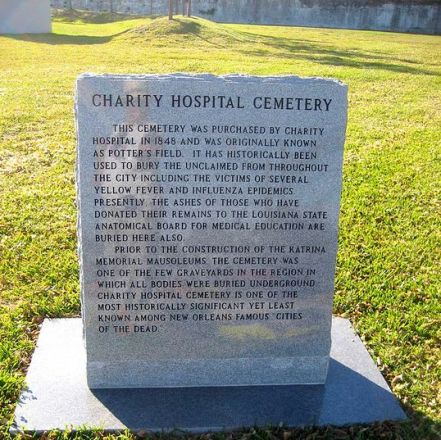
Humphrey’s Story
The ten men, calling themselves the Blackford Mining Company, were ebullient as they began a two-day march over crusty snow from Trenton to Richmond, Indiana. Leaving behind their lives as farmers, they were on their way to California to make their fortunes in the mines.
A rough, 11-hour stage journey took them to Cincinnati where the following day they boarded a steamboat, appropriately named the Indiana, for a 10-day journey down the Ohio and Mississippi Rivers. They went as lowly deck passengers, responsible for their own meals. They slept in whatever nook they could secure amongst the mass of people, cord wood for the boilers, crates, barrels, and livestock.
As the Indiana approached New Orleans, Humphrey Anderson, a married father of five, confided to fellow “miner,” John C. Teach, that he’d been feeling unwell since they left home. The cold weather on the early part of the river trip had not improved the situation. His face was aflame with infection. St. Anthony’s Fire, as it was known. Medically called erysipelas.
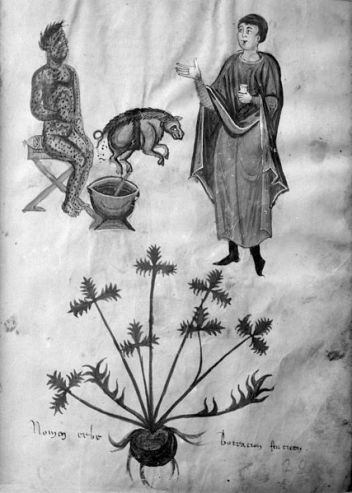
While most of the men were enjoying the novelties of the French/Spanish city on the delta, Humphrey grew increasingly worse. Henry Jenkins finally insisted he go to the hospital. One brief examination later and Humphrey was admitted.
Though the company had vowed in their Articles of Agreement that none would ever be left behind, the eagerness to reach California overrode their compassion. Humphrey and Henry would be left behind as the others boarded a steamship to Panama, including Humphrey’s brother, John K. Anderson. At least that was the plan.
On Saturday afternoon, March 29, 1851, Henry and two of the others visited Humphrey (but not John Anderson, who “could not stand it to see him die and bury him”). By then, it was clear he would not recover and Henry vowed to stay with him to the end. The infection had too great a hold on Humphrey and “he was out of his right reason the greater part of the last twenty-four hours and of course said nothing about his home or family.”
Earlier, a nun had spent some time talking with Humphrey regarding any religious services he might feel in need of. He responded, “I have not religion, but wish to have before I die.” About 4 p.m. Humphrey breathed his last and Henry grimly went about making the necessary arrangements. He also had the daunting task of writing a letter to Humphrey’s family informing them of their loss.
“I then went to an undertaker and procured a coffin and engaged a hearse and the digging of the grave…I have tried to do all that was in my power for him while liveing and shall see him decently intered…the coffin, hearse, one carriage and diging the grave cost twenty dollars – we feel our loss but at the same time it seems to have a tendency to unite the rest of us more closely together as we see the necessity of standing by each other.”
The funeral was held Sunday morning. Having missed their opportunity to take the steamship, the more somber remaining men boarded the Brig Josephine on Monday, taking leave of the city of their sorrow.
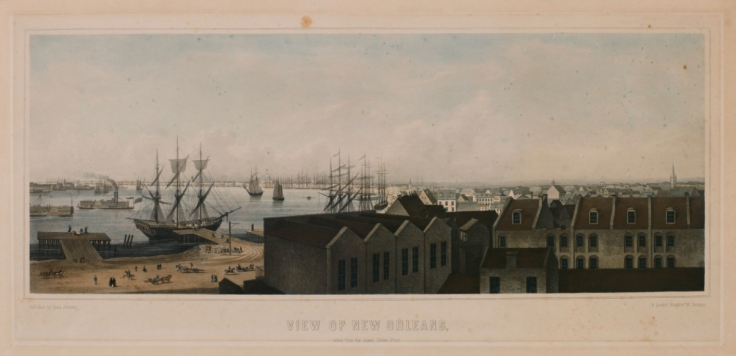
Feature Image: Katrina Memorial at Charity Hospital Cemetery in New Orleans. (CC on Flickr by Michael Homan)
Humphrey Anderson on Ancestry.com
Sources:
Jenkins, Henry Z. Letter to his wife, Abigail G. Jenkins on March 29 – 30, 1851 from New Orleans and letter to his wife April 18 – 23, 1851 from Chagres. Collection of the Henry E. Huntington Library.
Holcombe, Dr. R. Gordon, Jr. 1937. Tulane’s “Downtown” Medical School. Pictures from the demolition of Charity Hospital 1936 – 1937.
Report of the Board of Administrators of the Charity Hospital for 1852. 1853. True Delta Book and Job Office, New Orleans.
Fossier, A. E., A. M. MD. 1923. The Charity Hospital of Louisiana. Reprinted from the New Orleans Medical and Surgical Journal of May to October 1923.
https://hubpages.com/family/The-history-of-Charity-Hospital-Cemetery-and-Hurricane-Katrina-Memorial (contains an interest story about the city’s attempt to turn the cemetery into a bus station)
http://old-new-orleans.com/NO_Charity_Hospital.html
https://gonola.com/things-to-do-in-new-orleans/interesting-new-orleans-cemeteries
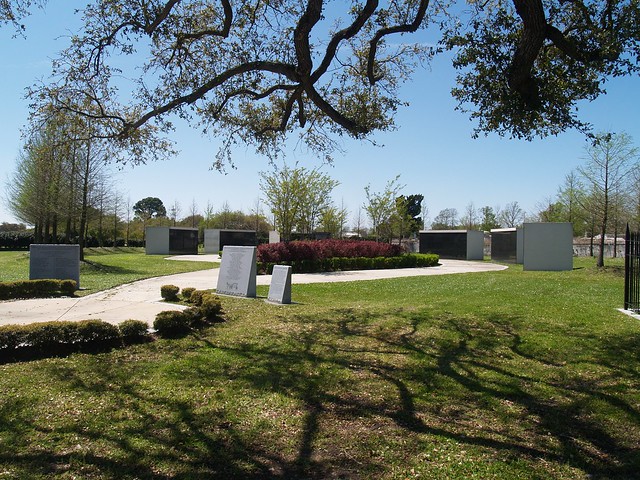
City of sorrow indeed.
LikeLiked by 1 person
Not an auspicious beginning.
LikeLike
Such an interesting story in all ways: the hospital, your ancestor’s story, the cemetery, and the connection to Katrina.
LikeLiked by 1 person
Many aspects to the tale. I may have tried to squeeze in too many!
LikeLiked by 1 person
We were at Lafayette Cemetary many years ago (in the early ’70s), while in New Orleans. Very different and unusual!
LikeLiked by 2 people
It was very different from any cemetery I’ve ever been to.
LikeLike
Ebullient? Really? Makes me jump with exuberance! That was an interesting piece. My wife often sombríos at cemeteries to noodle around. I think she’s weird, but it usually turns out interesting.
LikeLiked by 1 person
They are fonts of human history. And peaceful.
LikeLiked by 1 person
Sad story. Fortunately Humphrey had a good friend in Henry. He seemed more of a brother than his own in the circumstance.
LikeLiked by 1 person
There’s a lot more to that than I could fit into a blog post. The men in the company did give Henry credit for his compassion during Humphrey’s end-of-life. He was also the oldest in the company at 49. Most of the men were 18 – 35, including John Anderson. John was the youngest male child in his family and one of his older brothers had died a year or two previous to Humphrey. Henry was charitable toward John in the circumstance, saying to Abby, “different individuals have different views and ways of expressing love feeling and friendship and the best and safest way is to have charity and judge not.”
LikeLiked by 1 person
I suppose we all deal with our grief in our own way, always a challenge to “judge not”, and Henry would have had more experience and clearly a caring individual in his nature.
LikeLiked by 1 person
Wow…this is fascinating! New Orleans is my favorite city to visit…so much amazing history there.
LikeLiked by 1 person
It is an interesting place. I really enjoyed seeing parts of the old city – the Garden District, Tulane, the French Quarter, etc. It has quite a history, indeed.
LikeLiked by 1 person
Good story Eilene, one of your best! Why not have different “tales” of Humphrey if you have more? I’ve been to New Orleans, went for a Super Bowl in 1991!
LikeLiked by 1 person
This was a much abbreviated story from my gold rush book, so there is a bit more! New Orleans is an exotic setting for any story.
LikeLiked by 1 person
A 10% mortality rate is indeed pretty damn good for the pre-germ theory days, considering usually only poor and extremely sick people even went to hospital, and that 10% was the mortality rate for otherwise healthy women giving birth. Interesting story!
LikeLiked by 1 person
That sort of information would be right up your alley! Thanks for reading.
LikeLiked by 1 person
Love St. Anthony’s fire pic! I find it funny even…
LikeLiked by 1 person
It looks more like the victim has a bad case of measles.
LikeLiked by 1 person
Haha true…
LikeLiked by 1 person